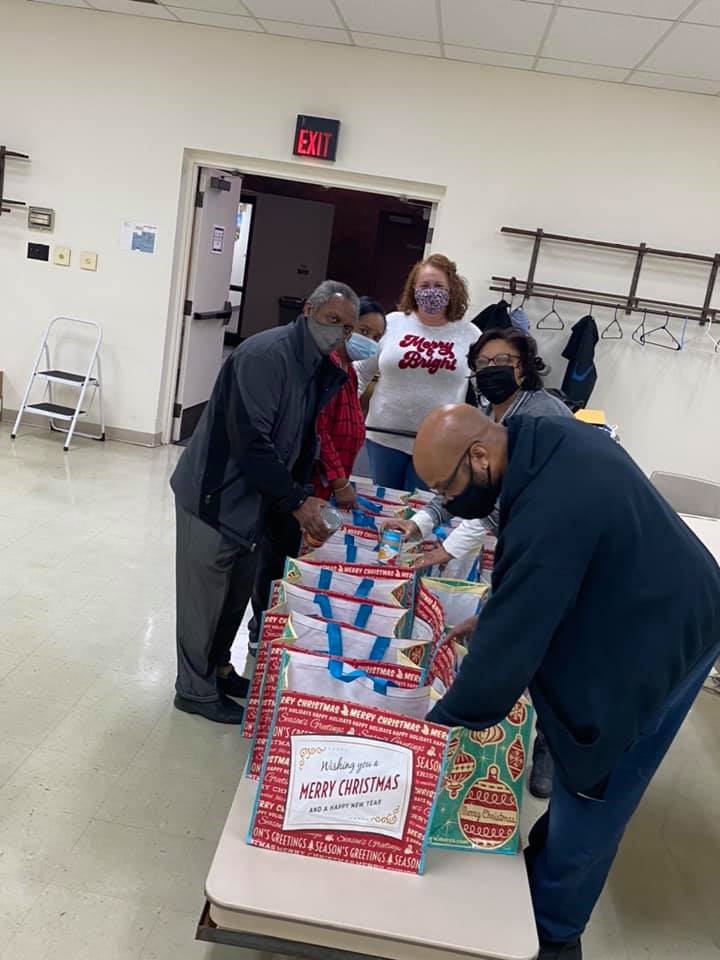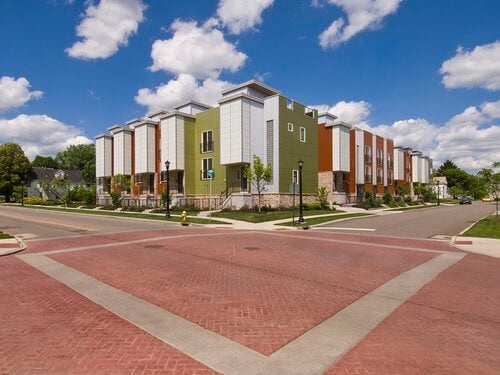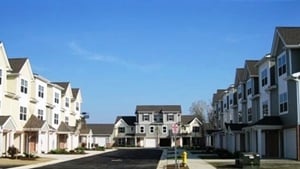A NeighborWorks America network organization in Ohio was able to help staff and East Akron residents with personal protective equipment (PPE), homeownership education and even groceries, thanks to a boost from NeighborWorks America and national banking partner Fifth Third Bank. East Akron Neighborhood Development Corporation (EANDC), a longtime NeighborWorks network organization, had been concerned at the beginning of the pandemic, when high costs of PPE and numerous extra expenses stretched their budget thin.
EANDC President and CEO Cheryl Stephens says her concerns included making sure her staff could continue to work safely, that they could keep the homeownership center running and homebuyer classes going, and that they could assist residents. "Fifth Third figured out a way to help us and other nonprofits like us through NeighborWorks," she says. "That gave me a better piece of mind. It's important that lenders realize there might be something unforeseen, and that's what Fifth Third did with their money with NeighborWorks. They helped us deal with the unforeseen."
The $25,000 grant helped the organization maintain its homeownership center and provided technology upgrades for workers who had to work outside the office due to the pandemic. And it had a trickledown effect.
For instance: one afternoon, a property manager came across a resident carrying groceries – when the resident was supposed to be quarantining due to COVID. The resident said he didn't have anyone to help him get the food he needed, Stephens says. EANDC stepped in. The organization asked Dave's Supermarket, a grocery tenant in one of EANDC's commercial buildings, if they could buy the dented cans and merchandise at a discount to aid older residents who had been laid off from pension-stretching jobs. The market sold EANDC the goods at cost so the nonprofit could provide bags of food to nearly 200 families, including seniors and veterans, containing staples like cereal, flour, biscuit mix, cans of tuna, fresh chicken and more.
"We did that three times," Stephens says. "We were able to cobble those kinds of things together because we weren't worried that we'd have the money to take care of salaries and capital investments. Having funds that paid for our core costs allowed us to do something extra for our residents."

Stephens says doing extra things for residents was important. "When we delivered those bags, there were several veterans who just cried. That meant a world of difference to them." They plan on continuing the practice even after the pandemic ends.
EANDC also reached out to legal aid and created a partnership to make sure the tenants had someone to talk to with questions about rent and evictions. "We think of ourselves as good guys," Stephens says. "But sometimes folks need a third party to tell them what's the law and what they should and shouldn't do and what their protections were. When you're not worried about making payroll, you can have big thoughts."
Meanwhile during the pandemic, the homeownership center has seen an increase in residents attending classes, says Toya Kelker, director of homeownership for EANDC. She attributes part of the increase to the convenience of being able to take the courses virtually. "They can do it on their phones," she says.
Inventory of affordable homes is low right now, she says, converting people to homeownership has slowed. "But they're getting educated," she says. "They're getting ready."
Stephens expects a virtual component to become a permanent part of their programming, "though there's something incredibly satisfying about interacting with people in person. We want them to understand that we truly care about them and offering virtual classes gives families flexibility to work our classes in their schedule."
Some of those same families – those who kept their jobs – were able to save money during the pandemic. Kelker has been working to match residents with programs that can help them – down-payment matches, for instance.

"Usually one of the obstacles to homeownership is savings," Kelker says. "But people are coming in with savings."
At the same time, foreclosure counseling has increased. "But lenders are offering COVID relief and forbearances," Kelker says. "They have programs ready if needed."
Stephens says the grant from NeighborWorks and Fifth Third helped with staff morale, too. They'd worked incredibly hard through the pandemic, she says, and it helped them to know their jobs were safe.
 EANDC owns and manages more than 700 units, and is a minority partner in other properties, for a total of more than 1,000 unit. More than 1,600 people live in those units. NeighborWorks organizations like EANDC play a vital role in helping build safe, affordable places to live – and in building strong communities.
EANDC owns and manages more than 700 units, and is a minority partner in other properties, for a total of more than 1,000 unit. More than 1,600 people live in those units. NeighborWorks organizations like EANDC play a vital role in helping build safe, affordable places to live – and in building strong communities."Fifth Third Bank is a strong partner for many of our NeighborWorks organizations," says John Santner, regional vice president for the Midwest Region. "They understand the need for community-based groups like East Akron Neighborhood Development Corp. to be able to have flexibility in the funding they receive. This flexibility allows organizations, especially when grounded with their communities, to pivot to meet the real and on-the-ground needs of the communities they serve."
Santner says he has seen groups within the region pivot to provide food support, COVID-19 testing sites, and rent relief – "all areas that were meeting a real community need during the pandemic."
Byna Elliott, senior vice president and chief enterprise responsibility officer for Fifth Third Bank, says her organization is committed to preventing foreclosures and evictions and assisting with the impact the pandemic has had on communities across the country.

